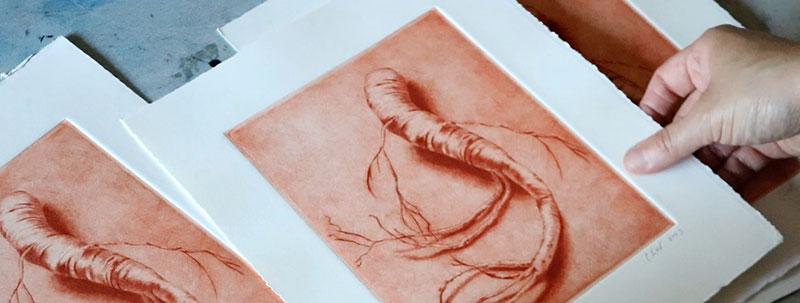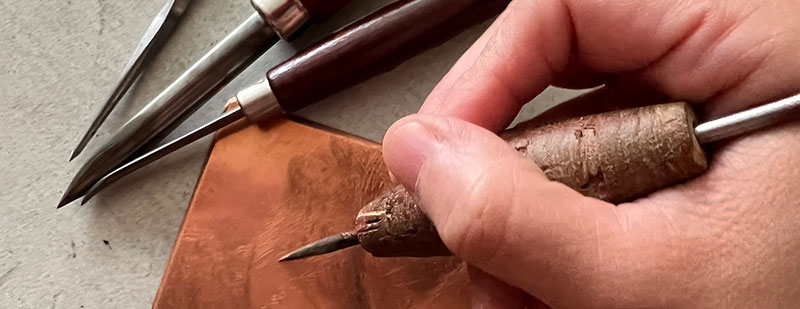See step by step how to do a drypoint, a non acid intaglio printmaking technique where an etching needle is used to etch directly into a copper plate.
- 1 min. short (paper shopping)
- 1 min. short (supply box)
- 1 min short (blotters)
- 2 min. version (signing & editions)
- 7 min. version (preparing plates)
- 8 min. version (inking & wiping)
This video demos techniques like beveling plates, how to set up a press for a home studio, drawing on a copper plate with an etching needle, wiping with a tarlatan, proofing, and creating an edition.
Demo by Art Prof Clara Lieu.

- 1 min. short (printmaking paper)
- 1 min. short (spit bite)
- 12 min. version (setting up a press)
- 51 min. version (full tutorial)
Materials like printmaking ink options, metal polishes, copper and zinc plates, ink additives like magnesium carbonate and plate oil, etching tools including a burnisher, scraper, and etching needles are explained.

Video Walkthrough
- Drypoint is a great entry point to intaglio printmaking, it does not use acid and is very close to drawing.
- Drypoint produces a velvety, lush black line due to the burr created by the etching needle.
- You’re limited to about 25 prints for each drypoint plate, the burr wears down as you print more and therefore the image degrades.
- You can make drypoints with zinc and copper plates.
- Copper plates tend to be more durable than zinc, although a copper plate costs more.
- People use plexiglass for drypoints, but these aren’t nearly as durable as a copper plate.
- The darkness of a drypoint line depends on the physical pressure from the etching needle.
- Make sure to take plenty of breaks when drawing a drypoint, your hand will cramp up from needing to press down hard.
- Preparing a plate involves beveling all 4 sides and also polishing the plate.
- Setting up a small scale press for a home studio is a lot more convenient than paying for time at a local printshop.
- Making changes to your plate after proofing gets tricky as your print is the reverse image of your plate image.
- The proofing process isn’t linear, and it’s common to have to do lots of bad prints before you get your plate to where you want it to be.

Art Supplies
- Tarlatan
- Mat board scraps
- Etching Ink, Sepia
- Blotters (optional)
- Towels (for blotting paper)
- Nitrile Gloves
- Baby Powder

Intaglio Plates
Ink Modifiers
Press Supplies

Printmaking Suppliers
Printmaking Books

As a free educational source, Art Prof uses Amazon affiliate links (found in this page) to help pay the bills. This means, Art Prof earns from qualifying purchases.


